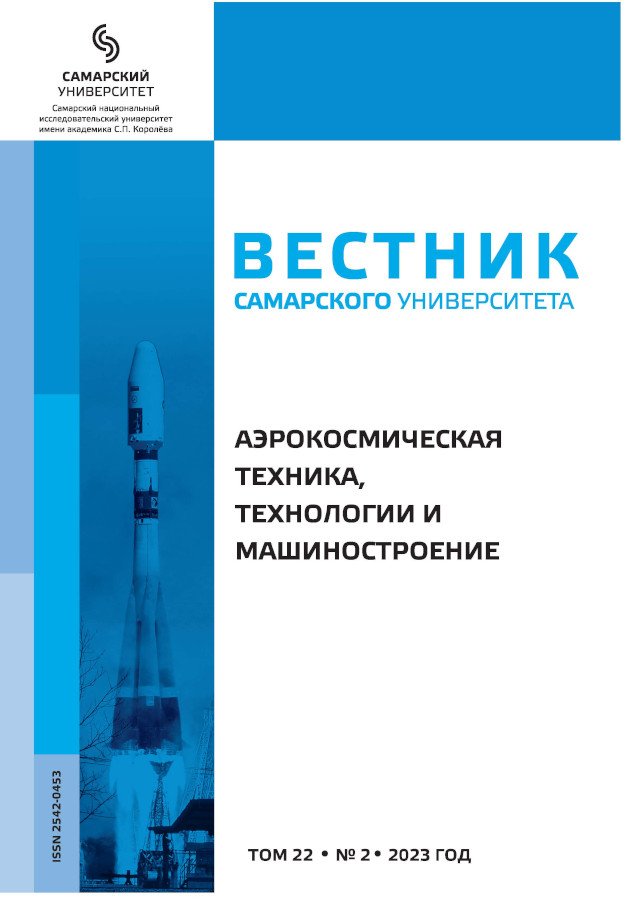Method of individual selection of parts for selective assembly of electrohydraulic servo drives
- Authors: Medvedev A.V.1, Khalatov E.M.2
-
Affiliations:
- Design Bureau “Armature” – Branch of Joint Stock Company “Khrunichev State Research and Production Space Center”
- Kovrov State Technological Academy named after V.A. Degtyarev
- Issue: Vol 22, No 2 (2023)
- Pages: 67-78
- Section: MECHANICAL ENGINEERING
- URL: https://journals.ssau.ru/vestnik/article/view/23127
- DOI: https://doi.org/10.18287/2541-7533-2023-22-2-67-78
- ID: 23127
Cite item
Full Text
Abstract
A method for selecting parts and assembly units (hereinafter briefly referred to as parts) in sets for assembling a batch of electrohydraulic servo drives is presented, based on the measured (individual) mechanical and hydraulic characteristics of the parts. The preparatory stage is described: construction of a mathematical model of the product, determination of the parameters of parts and adjustments that have the greatest impact on the parameters of end products, formation of a system for assessing the quality of products in the batch, mathematical formulation of the task of selecting parts. The task of selecting parts is formulated as the assignment problem in the maximin formulation. A deterministic algorithm for solving the problem is presented, based on the branch and bound method and taking into account the fact that adjustments are made during the assembly of drives. A significant reduction in the number of steps (iterations) when searching for the optimal distribution of parts across assembly sets achieved due to the chosen mathematical formulation of the task, as well as due to the chosen strategy of selecting parts in the next assembly set. We suggest that an assembly set should include, first of all, the “most troublesome” parts the parameters of which do not allow obtaining a set, the projected quality indicator of which will be higher than the established value. At the same time, the negative impact of these parts on the product parameters is compensated by combining them with other parts in one assembly set. The results of mathematical modeling of assembling 992 drives with random formation of assembly sets and with individual selection of parts are presented. Modeling shows that as a result of implementing individual selection of parts in accordance with the described method, a significant reduction in the spread of parameters of end products within batches can be expected, as well as improvements in functional performance of the products. The presented method of individual selection of parts can be used in the assembly of various products.
About the authors
A. V. Medvedev
Design Bureau “Armature” – Branch of Joint Stock Company “Khrunichev State Research and Production Space Center”
Author for correspondence.
Email: mavrich@mail.ru
ORCID iD: 0000-0002-3946-5206
Design Engineer
Russian FederationE. M. Khalatov
Kovrov State Technological Academy named after V.A. Degtyarev
Email: halatov@dksta.ru
Doctor of Science (Engineering), Professor of the Department “Hydraulic and Pneumatic Control Systems and Hydraulic Drive”
Russian FederationReferences
- Zadorina N.A., Nepomiluev V.V. Ensuring the quality of assembly of high-precision products based on the method of individual selection of parts. Assembling in Mechanical Engineering and Instrument-making. 2020. No. 4. P. 152-157. (In Russ.)
- Matthias Hwai Yong Tan. Contributions to quality improvement methodologies and computer experiments: Diss., Georgia Institute of Technology, 2013. 263 p.
- Petrukhin A.V., Moskvicheva N.P., Saninskiy V.A., Kochkin M.V. Algorithms of elements operation of automatic selection of component parts at assembly of multiple-seated bearing assembly of internal combustion engine. Vestnik Mashinostroeniya. 2016. No. 5. P. 38-42. (In Russ.)
- Gerasimov D.G. The assembly using utomated database. Assembling in Mechanical Engineering and Instrument-making. 2015. No. 7. P. 12-16. (In Russ.)
- Zadorina N.A., Nepomiluev V.V., Oleynikova E.V. Individual selection of parts during assembly as an alternative to the need to improve the accuracy of their processing. Assembling in Mechanical Engineering and Instrument-making. 2019. No. 5. P. 225-230. (In Russ.)
- Liu Weidong, Liu Haiming, Guo Jinhui. Multi-object selective assembly based on hybrid particle swarm algorithm. Proceedings of the 37th Chinese Control Conference (July, 25-27, 2018, Wuhan, China). P. 2506-2511. doi: 10.23919/ChiCC.2018.8484030
- Kannan R., Selladurai V. Optimization of characteristic parameters of turbocharger assembly using GA. Manufacturing and Industrial Engineering. 2011. Iss. 1. P. 39-43.
- Medvedev A.V., Zaramenskii I.Y., Khalatov E.M. Control of product assembly processes using data on the parameters of components and assembly units. Journal of Machinery Manufacture and Reliability. 2021. V. 50, Iss. 4. P. 351-356. doi: 10.3103/S1052618821040087
- Medvedev A.V., Khalatov E.M. Quality rating of assembly sets in directional selection of parts. Testing. Diagnostics. 2020. No. 2. P. 48-53. (In Rus.). doi: 10.14489/td.2020.02.pp.048-053
Supplementary files






















